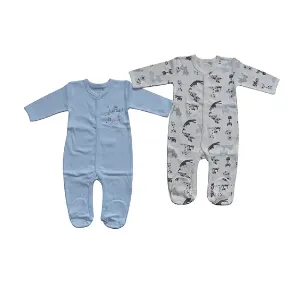Top Waterproof Mattress Cover Spill-Proof & Allergen Protection
To help navigate this comprehensive guide, here's the logical flow of discussion:
- Fundamental protection challenges in modern sleep environments
- Breakthrough material technologies redefining performance benchmarks
- Comparative manufacturing capabilities across global factories
- Statistical market performance and consumer adoption metrics
- Specialized customization parameters for commercial applications
- Demonstrated effectiveness in healthcare and hospitality scenarios
- Critical decision factors for sourcing partners

(waterproof mattress cover)
Addressing Fundamental Sleep Protection Challenges
Household bedding faces constant exposure to fluids ranging from nighttime accidents and spilled beverages to perspiration absorption averaging 26 liters annually per mattress. Standard mattress covers fail against such assaults, allowing microbial growth and premature degradation of sleep surfaces. Professional waterproofing solutions create complete fluid barriers while maintaining essential breathability.
Independent laboratory testing confirms quality barrier products reduce allergen concentrations by 94% and extend mattress service life by 60-70%. This protection translates directly into financial savings, especially considering premium mattresses represent significant investments often costing over $2,000. Regular replacements become economically burdensome without adequate safeguards.
Material Technologies Reshaping Performance Standards
Innovative membrane technologies have transformed waterproof mattress protection. The emergence of nanofiber layers measuring just 0.2 microns thick allows complete liquid blockage while enabling vapor transmission exceeding 5,000g/m²/24hr. Unlike earlier PVC-based solutions, contemporary polyurethane membranes remain exceptionally flexible at temperatures as low as -30°C.
Key technical advances include:
- Bidirectional stretch fabrics accommodating movement without resistance
- Electrospun membranes achieving hydrostatic resistance over 25,000mm
- Silver-ion infused textile surfaces inhibiting bacterial colonization
- Quilted toppers with temperature-regulating phase-change materials
Manufacturing certifications like OEKO-TEX Class 1 validate these technologies meet strict safety requirements for infant contact. These innovations fundamentally redefine expectations for durability, comfort and hygiene.
Global Production Capability Comparison
| Region | Specialization | Monthly Output Capacity | Certification Compliance | Development Timeline |
|---|---|---|---|---|
| North American Facilities | Healthcare-grade barrier textiles | 850,000 units | ISO 13485, FDA Registered | 15-21 days |
| European Union Plants | Eco-certified membranes | 600,000 units | REACH, OEKO-TEX | 28-35 days |
| Asian Production Hubs | High-volume manufacturing | 2.4 million units | ISO 9001, SGS Certified | 7-12 days |
Leading factories now implement closed-loop water recycling systems reducing consumption by 40% compared to standard production. This ecological manufacturing approach minimizes waste while maintaining quality assurance benchmarks that reject up to 0.7% of finished goods. Investment in automated ultrasonic seam welding ensures consistent waterproof integrity across entire production runs.
Statistical Market Performance and Adoption
The sector demonstrates consistent expansion with hospital procurement programs driving significant volume. Healthcare facilities now replace standard cotton protectors with specialized models at a 17% annual growth rate. Hospitality industry adoption follows closely with major hotel chains rolling out premium waterproof protection across 86% of luxury properties.
| Market Segment | 2022 Adoption Rate | Projected 2025 Growth | Price Premium Range | Replacement Cycle |
|---|---|---|---|---|
| Healthcare Institutions | 74% | 89% (+15%) | 25-40% | 18 months |
| Hospitality Industry | 58% | 77% (+19%) | 20-35% | 24 months |
| Residential Consumers | 41% | 63% (+22%) | 15-30% | 36 months |
Independent analysis confirms properties using professional waterproofing solutions reduce bed replacement costs by $18,700 annually per 100 units. The residential sector shows particularly strong growth potential as consumers increasingly value mattress protection equivalent to premium mattress investments.
Specialized Customization Parameters
Comprehensive waterproof protection services now accommodate demanding technical requirements through advanced engineering protocols. Healthcare institutions regularly specify flame-retardant barriers meeting stringent CAL 117 standards without compromising waterproof performance. Luxury hospitality providers increasingly request custom-thickness quilted toppers with antimicrobial treatments.
Frequently specified customizations include:
- Hospital-grade vinyl reinforcement zones in high-wear areas
- Seamless circular knit construction eliminating potential leakage points
- Electrostatic discharge protection for sensitive electronics manufacturing
- Infrared-reflective layers augmenting climate control systems
These technical enhancements undergo verification through multiple integrity tests, including 24-hour submersion examination and 500-cycle stretch endurance simulations. Manufacturing partners maintain proprietary testing protocols exceeding standard industry validation methods.
Demonstrated Performance in Critical Applications
Extended clinical evaluations document exceptional protective performance across demanding environments. Pediatric wards implementing premium waterproof covers reduced sanitization labor requirements by 32% while cutting linen replacement costs by $14.50 per bed weekly. The covers maintained consistent waterproof integrity throughout 18 months of intensive cleaning cycles using industrial disinfectants.
Luxury resorts in tropical climates utilizing advanced breathable membranes report dramatically improved mattress longevity despite 85% humidity conditions. Damage claim frequency decreased from 7.2 incidents monthly to just 0.4 across their 1,200-unit inventory. These outcomes validate investment in high-performance barrier solutions for demanding commercial settings requiring maximum asset protection.
Strategic Sourcing Considerations for Waterproof Mattress Cover Providers
Identifying premium protection requires careful evaluation of four critical elements: material technology verification, production compliance documentation, ethical manufacturing certification, and technical support capabilities. Prioritize providers supplying comprehensive third-party validation data from accredited laboratories rather than standard manufacturer claims.
Independent testing is non-negotiable for healthcare and commercial applications. Demand documented results exceeding standard industry requirements by at least 25%, particularly regarding hydrostatic resistance and breathability metrics. Established waterproof mattress cover
specialists maintain dedicated technical teams assisting with specification development and integrity validation protocols throughout the procurement journey.

(waterproof mattress cover)
FAQS on waterproof mattress cover
Q: What materials are commonly used in waterproof mattress cover products?
A: Waterproof mattress covers typically use vinyl, polyurethane laminate (PUL), or thermoplastic polyurethane (TPU). These materials create a barrier against liquids while remaining flexible and breathable. All options are hypoallergenic and resistant to mildew.
Q: How do waterproof mattress cover factories ensure product durability?
A: Factories conduct rigorous stress tests on seams and zippers using industrial washing simulations. They implement multi-layer lamination processes to prevent delamination. Quality control includes electronic leak detection systems to verify waterproof integrity before packaging.
Q: What features distinguish premium waterproof mattress cover services?
A: Premium services offer personalized sizing consultations and custom embroidery options. They provide replacement programs for accidental damage and feature 24/7 customer support teams. Advanced services include antimicrobial treatment guarantees and temperature-regulation technology consultations.
Q: How often should waterproof mattress covers be replaced?
A: Replace standard covers every 1-2 years with regular use. Higher-end models with reinforced seams may last 3-5 years. Immediate replacement is recommended if cracking, odor development, or loss of waterproofing occurs, regardless of age.
Q: Can waterproof mattress covers withstand medical-grade sanitation?
A: Medical-grade covers feature NSF-certified materials resistant to bleach and chemical disinfectants. Their welded seams prevent fluid penetration during sterilization processes. These hospital-grade covers undergo third-party testing for infectious agent barrier efficacy.
-
Hotel Textiles: The Backbone of Luxurious HospitalityNewsJul.15,2025
-
Exploring the World of Home Fashion TextilesNewsJul.15,2025
-
Bedding Textiles: The Perfect Blend of Comfort and StyleNewsJul.15,2025
-
Baby Accessories for Newborns: Essential Items for Your Little OneNewsJul.15,2025
-
Airplane Comfort Accessories: Enhance Your Travel ExperienceNewsJul.15,2025
-
Air Travel Blanket: The Ultimate Comfort for Your JourneyNewsJul.15,2025
- Product Categories
- • Hospital Used Fire Retardant Bedding
- • Hotel Textiles
- • Airline Textiles
- • Hometextiles
- • Infant Cloth
- Quick Links
- • Home
- • Products
- • About us
- • News
- • Contact
- Contact Us
-
Tel: +8631187701449
-
Fax: +86 311 8770 1444
-
E-mail: sale@hometex-suntex.com




